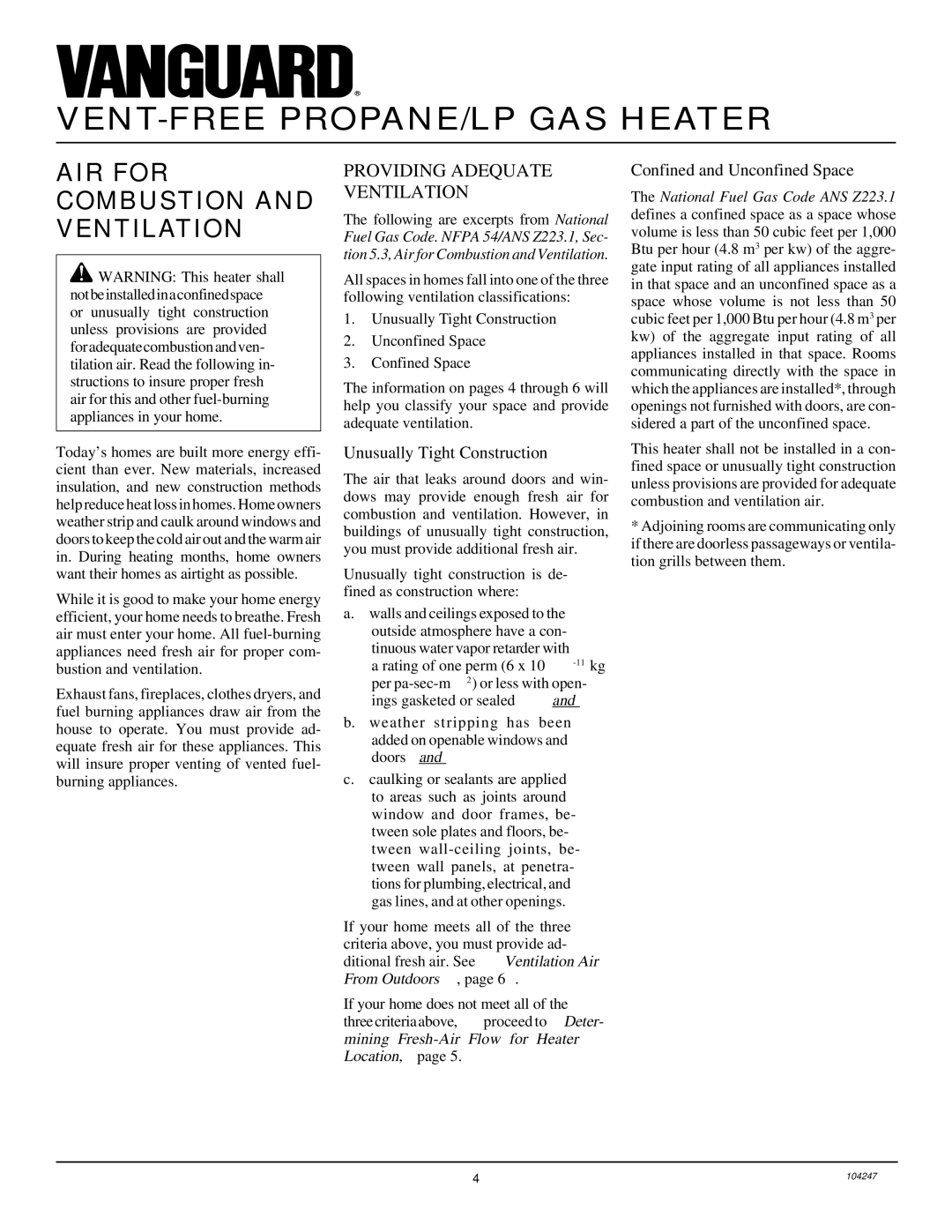VP1600ITB, VP2200ITB specifications
The Desa VP2200ITB and VP1600ITB are advanced portable heaters designed for efficient heating solutions in a variety of settings. Both models showcase innovative features and technologies that make them standout choices for residential and commercial use.The VP2200ITB is a powerful unit designed to provide substantial heating output, making it suitable for larger spaces. With a robust heating capacity, it ensures rapid warmth in cold conditions. On the other hand, the VP1600ITB is a slightly smaller model, ideal for medium-sized rooms or personal areas. This makes both units versatile, catering to different space heating needs.
One of the most notable features of both models is their digital thermostat, which provides precise temperature control. Users can easily set their desired heating levels, ensuring optimal comfort and reducing energy wastage. The adjustable heat settings, ranging from low to high, allow consumers to tailor the heat intensity according to specific requirements.
Both the VP2200ITB and VP1600ITB incorporate advanced safety technologies. These include a tip-over switch that automatically shuts off the heater if it is knocked over, and an overheat protection feature that prevents the unit from reaching unsafe temperatures. These safety mechanisms make them suitable for use in homes with children or pets.
Energy efficiency is another significant characteristic of these heaters. They are designed to provide maximum heat output with minimal energy consumption, resulting in reduced electricity bills. The environmentally friendly design is complemented by quiet operation, making them perfect for use in bedrooms, offices, or any space where noise levels should be kept to a minimum.
The heaters also feature compact and portable designs, equipped with handle grips for easy transportation. This means they can be effortlessly relocated from one room to another, providing flexibility according to changing heating needs.
Additionally, their sleek aesthetics allow them to blend seamlessly into various decors, ensuring that functionality does not come at the expense of style. With a range of features and practical technologies, the Desa VP2200ITB and VP1600ITB models are ideal solutions for effective heating, delivering warmth, safety, and efficiency in one package.

